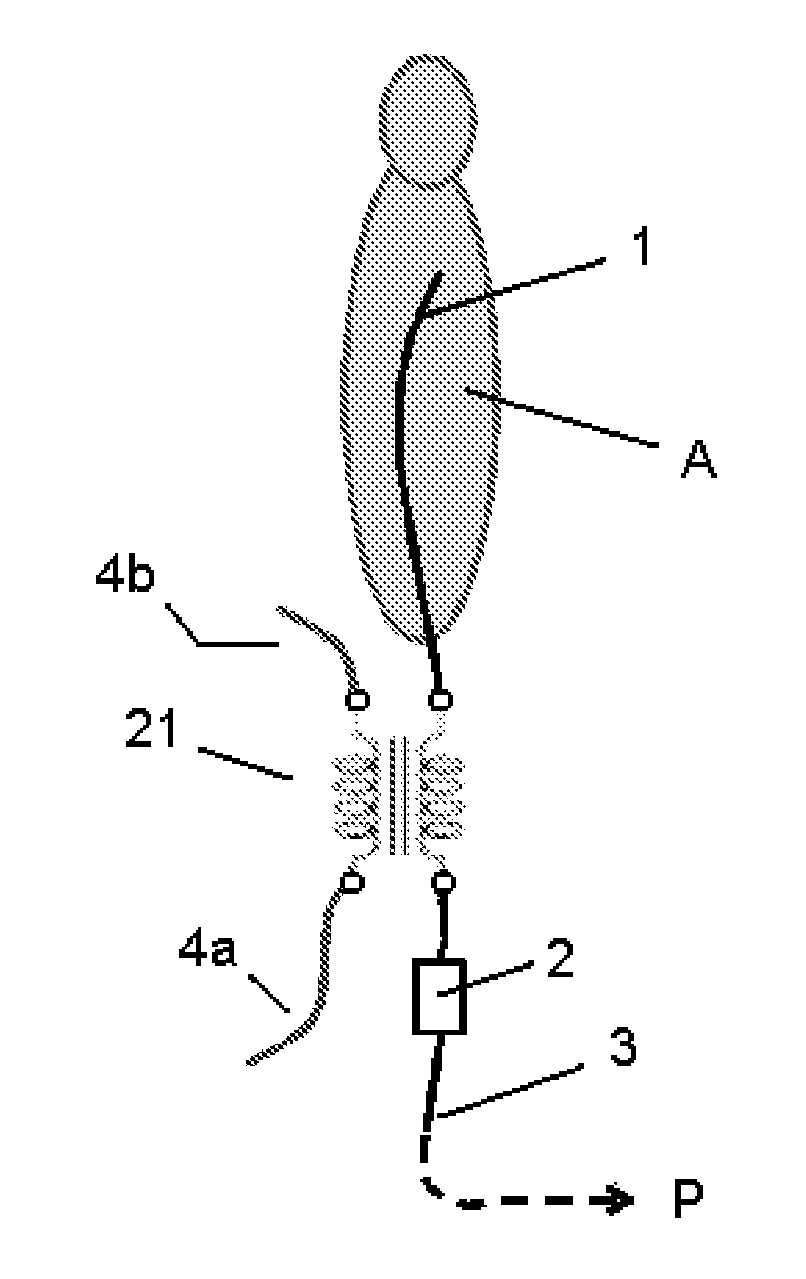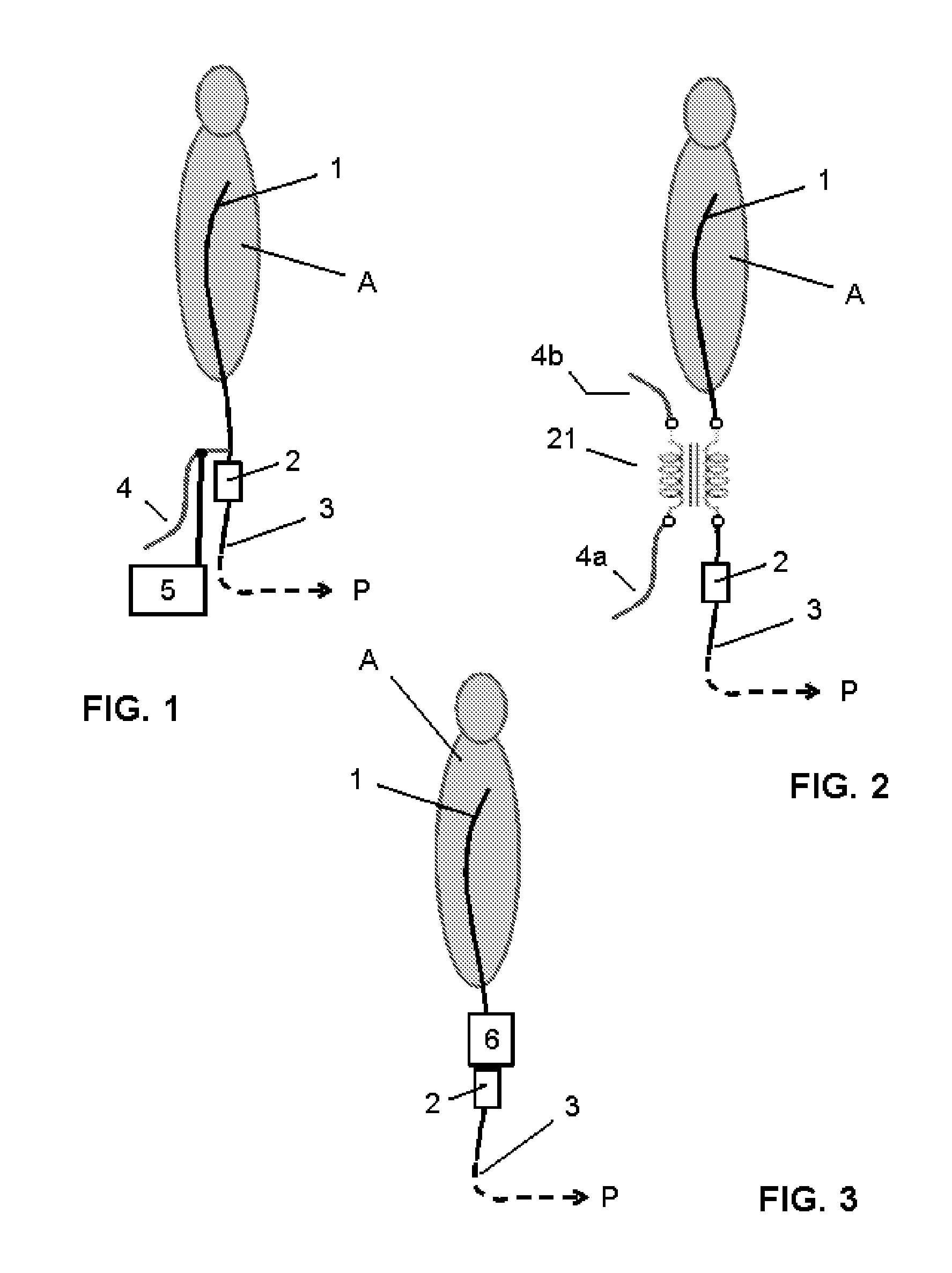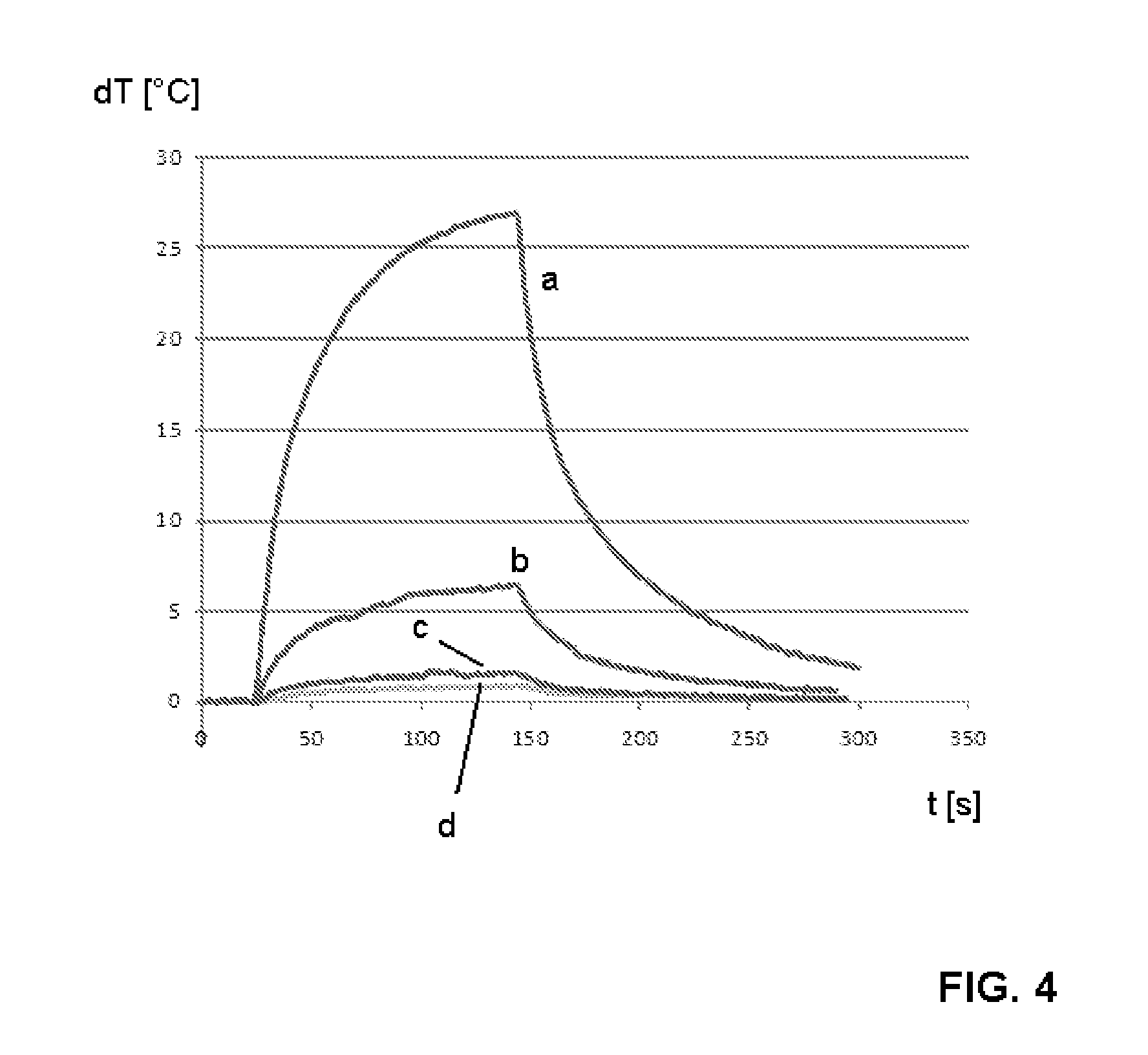Rf-safe interventional or non-interventional instrument for use in an MRI apparatus
a non-interventional, interventional technology, applied in the direction of instruments, magnetic variable regulation, process and machine control, etc., can solve the problems that trap circuits or chokes used to suppress resonant rf currents on conductors cannot be safely and efficiently used outside the examination object, and achieves the effect of reducing the risk of rf-safety, and compromising the function nor efficiency
- Summary
- Abstract
- Description
- Claims
- Application Information
AI Technical Summary
Benefits of technology
Problems solved by technology
Method used
Image
Examples
first embodiment
[0043]FIG. 1 shows a basic set-up of an interventional instrument according to the invention. Further, FIG. 1 schematically shows an examination object A in the form of a patient.
[0044]The interventional instrument substantially comprises a first conductive element 1 at a distal part or section of the instrument (in the following “distal conductor”) which is at least partly to be introduced into the examination object A. The distal conductor 1 comprises a distal end which is electrically open for RF common mode currents, and a proximal end which is connected preferably via an RF trap circuit like an RF choke 2 to a distal end of a second conductive element 3 at a proximal part or section of the instrument (in the following “proximal conductor”) which connects the interventional instrument with related operating units, control units or power supply units P (not indicated) at its proximal end and is realized e.g. in the form of an RF transmission line or cable.
[0045]Further, FIG. 1 sh...
second embodiment
[0055]FIG. 2 shows a basic set-up of an interventional instrument according to the invention together with an examination object A.
[0056]The same or corresponding components or elements as in FIG. 1 are denoted with the same or corresponding reference numbers.
[0057]The basic difference between this second embodiment and the first embodiment is, that the damping element is effectively added to the distal conductor 1 by an inductive coupling which is realized exemplarily by means of a transformer 21. The transformer 21 comprises a first winding which is serially connected into the distal conductor 1 and a second winding with which the damping element 4a, 4b is connected. The damping element is realized in the form of a first wire extension 4a and a second wire extension 4b, wherein the first wire extension 4a is connected with one end of the second winding and the second wire extension 4b is connected with the other end of the second winding of the transformer 21. The first and the se...
third embodiment
[0059]FIG. 3 shows a basic set-up of an interventional instrument according to the invention together with an examination object A.
[0060]The same or corresponding components or elements as in FIGS. 1 and 2 are denoted with the same reference numbers.
[0061]The interventional instrument again comprises a distal conductor 1 which is to be introduced into the examination object A, and a proximal conductor 3 in the form of a RF transmission line or cable which connects the interventional instrument with related operating units, control units or power supply units P (not indicated). The basic difference between this third embodiment and first and the second embodiment is that according to the third embodiment an electrically damping element in the form of at least one lossy dielectric load 6 is provided instead of a resistive and / or a reactive load 4; 4a, 4b. It is again effectively added to the distal conductor 1 at a position of the distal conductor 1 of an increased or maximum of the R...
PUM
 Login to View More
Login to View More Abstract
Description
Claims
Application Information
 Login to View More
Login to View More - R&D
- Intellectual Property
- Life Sciences
- Materials
- Tech Scout
- Unparalleled Data Quality
- Higher Quality Content
- 60% Fewer Hallucinations
Browse by: Latest US Patents, China's latest patents, Technical Efficacy Thesaurus, Application Domain, Technology Topic, Popular Technical Reports.
© 2025 PatSnap. All rights reserved.Legal|Privacy policy|Modern Slavery Act Transparency Statement|Sitemap|About US| Contact US: help@patsnap.com



